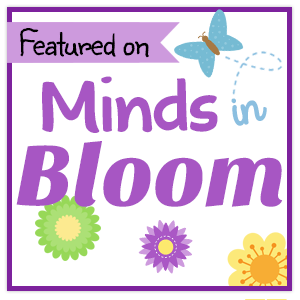For many years, along with my class, I adopted a local family at Christmas time who was struggling to make ends meet. We would have a fundraising day which was built around displaying project work we had completed, and would serve breakfast and lunch while entertaining parents, friends, and school and community members in exchange for money to spend on clothing, gifts, and even paying an electric bill for the family we had adopted.
It was never hard to find a family in need, especially during the holiday season. We got referrals from a local social service agency, or sometimes we were alerted to the needs of a family in our midst by a caring friend. The family always remained anonymous, and the gifts were delivered by someone who represented us. My students have brought holiday joy and relief to many homes over the years. The gratitude, love, and warmth they received in return was priceless.
I have continued this practice during my recent retirement, and this year I am reaching out to help a five year old girl who is living with her disabled grandmother. She needs so many of the basics: shoes, socks, boots and a jacket for the winter besides a few toys and books to brighten her Christmas. As a grandma myself, their story has touched my heart. It's still so very true that we need never look very far to find someone who could use a little help.
As I prepared for retirement a few years ago (Please come and take ALL my stuff!), a few of my teaching friends added to the list of ideas that they hoped I would have written down somewhere for others to follow in years to come. The Adopt a Family project was on that list. In this post, I hope to share some ideas with you on how to launch an Adopt a Family project in your classroom. Try it for a group Act of Kindness this month, or tuck it away for next year's holiday season!
Getting Started
Always a great believer in integrated and project based learning, I notice that it is coming back! I couldn't be happier about that, and this project can so easily be a part of subject integration. This will help you to "buy" time to work on your community service project with your kids. My students worked on a group project for display and an individual folk tale for am oral presentation.
As an example, at the time of year that we were working on our project (The Rainbow City Cafe), we were studying biomes, folk tales, sequence, and storytelling. Students had worked in groups on a project asking them to design, build, and set up for display a tourist spot in a particular biome, including a hotel, restaurant, leisure activities (including one involving math), a website, and an advertising brochure. Hmmm...Science, Technology, Engineering, Art, and Math. That's STEAM, and we were STEAMin' long before STEAM was cool!
I taught in a very multicultural school , and several of my students each year could read and speak in a language other than English. Each student could choose to prepare a folktale for storytelling in English or in their first (or second) language. If the second language was their choice, they also needed to prepare a short summary in English for our guests.
We discussed the meaning of the holiday season, had presented the various holidays celebrated by families in our community, and thought about what people who may not have been able to afford the trimmings of a holiday celebration might be feeling. We had a community organization where families in need could sign up for some help with the holidays, and in most years got a family referral from that agency with first names and lists of items on their wish lists. One year, a principal whose school was in a lower socio-economic area contacted me with a list for a family in his school community who had asked him for help. Churches, temples, and synagogues also often have such lists.
The discussion of our service project moved quickly from my own discussion with the class to our "Town Meeting", run by our class Mayor and City Council. From that point on, each year's project looked a little different, based on the input of our Rainbow City citizens (our mini-society name for our class).
I would print a list of items requested for our adopted family, using only labels like Mom (size 10), Dad (size L), Boy, 10 years old (size 14), Girl 6 years old (Size 6X), etc. I would also list household items or foods requested and add that cash donations would be accepted for help in paying utility bills. Parents would receive that list, along with a note telling what we were up to, and asking for volunteers to support us in our efforts.
Volunteers can also come from your local high school or house of worship, where teenagers often sign up to work on service projects. This whole project can be run without volunteers, but they sure make it easier and even more fun! I would usually donate the foods that we would serve for breakfast/lunch, and also the paper and plastic serving goods required. Parents can certainly be asked to donate those as well though. Try setting up a "Signup Genius" online to make the gathering of supplies and volunteers more streamlined.
The meals we would serve to our guests ranged from fancier to very simple. One year, a team of parents brought electric griddles and served a pancake and french toast breakfast and others had pizza sent in for the lunch guests. Other years, breakfast was bagels and cream cheese, and lunch was hot dogs served from a CrockPot slow cooker. Easy-peasy!
Drinks were apple and orange juice in the morning and lemonade and Kool Aid in the afternoon.
Our plan was that each group of guests would spend one hour in our room, eating for twenty minutes, listening to our storytelling for twenty, and then touring our project displays. Students served as greeters who would welcome our guests and take their donations, servers who would bring their food, entertainers who would tell their stories, and tour guides who would show the displays and answer questions about them. Each student also had one free hour during which they could eat and listen to stories, and then assist where needed. Students with diabetes or other special diet related needs would have that consideration built into their schedule.
I created an invitation to be sent home and also to be sent to our school board, central office folks, our school staff, and the staffs of other buildings. I was surprised the first year when the superintendent and assistant superintendent showed up, along with other central office staff. After that, I just came to expect their participation! Other teachers found time in their busy day to have lunch with us, or breakfast during their prep period. We were thrilled to welcome grandparents, aunts and uncles, and neighbors as well!
To make this part of the plan easy for you, I have created a Google Slide resource with editable text boxes for your invitation, rsvp, and teacher and kid schedules. Of course you won't be calling your project "Rainbow City Cafe" (although you are welcome to call it that, if you'd like!), so every part of these slides is editable. Change fonts, words, times, and add and subtract as you wish! Only the backgrounds are locked down. Thanks to Kelly Workman and Paula Kim for those backgrounds! You can get that document by clicking on the graphic below, and then clicking on "make a copy".
Our school day started at 8:15, so we planned the arrival time at 9 am for our first guests. Five sessions were scheduled, and we welcomed about 20 guests per session. The guests sat at our student tables with student chairs. Students of course were way too busy to be in their seats!
Four to six students (depending on class size) were assigned to each job for each session. Each student wore their Rainbow City shirt and a badge holder around their neck showing their own schedule. Student roles were: Greeter, Server, Entertainer, Tour Guide, and Off Duty. I did this project in different years with third, fourth, and fifth grade students. All of those grade levels performed beautifully and independently in these roles, including Special Ed inclusion students from Basic classrooms and EI rooms. Kids wanted to pitch in and help, and it just all came together every time!
Food was prepared in a corner of our classroom or in the teacher's workroom when possible. Most years, we made sure it was very simple and foolproof. Parents and my hubby picked up the food orders from the bakery, grocery, or pizza restaurant. All food was handled with food service gloves and great attention to hygiene.
Wrapping and Delivery
The day after the Cafe was when the wrapping fun began! Every gift was wrapped by students. Cards were made, decorated, and signed (first names only), and gifts were tagged. Cash and gift cards received the same wrapping attention as clothes and toys.
Parents volunteered to deliver the packages. If no volunteers were available, I delivered them myself. Drop off was usually at the community agency sponsoring our project, but several times, I was asked to drop off the gifts myself or with the principal from our adopted family's school. Those memories are held in my heart to this day. It really makes you appreciate all you have, and realize that hard times can fall upon any of us.
What You Receive
Aside from the beautiful thank you letters and cards to share with your students and their families each year, the magic that comes back to you is immeasurable. You and your students will share the memories and inspiration for other acts of charity and kindness for many years to come. You will have met your curricular goals in an authentic way. Your students will see that they are empowered, they are needed in this world, and that they can make a life changing difference for others. I hope you'll give this idea a try, and I wish you an amazing, joyful year ahead!




























I love the generosity and empathy this project teaches. Thanks so much for sharing!
ReplyDeleteI love this idea- teaching love and compassion by deed. Beautiful!
ReplyDeleteI love this idea!!! Kids learn so much from helping others and giving back to others!
ReplyDeleteLove this idea!! It is so important for children to understand the importance of giving to others! Thank you for sharing your great idea!
ReplyDeleteWhat a fabulous idea! You took teaching giving to a whole new level.
ReplyDelete